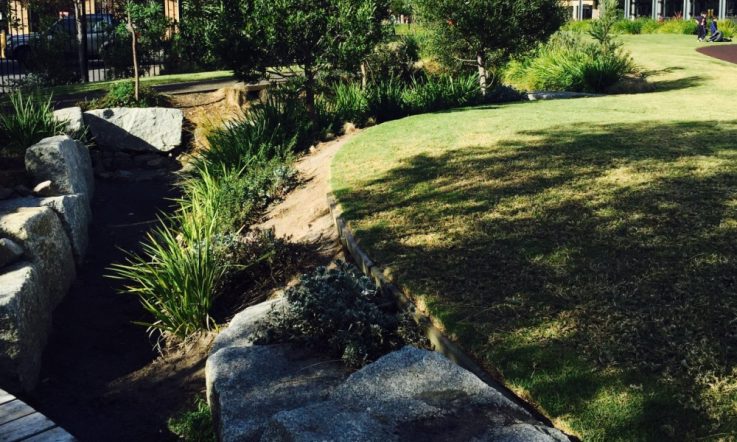Robust classroom discussions can bring learning to life for students, but these discussions require careful planning, clear purpose, strong question design, and meaningful connections to ensure they have a lasting impact beyond the classroom.
Dr Hilary Hollingsworth, Principal Research Fellow at the Australian Council for Educational Research (ACER), says it is important to not only plan your classroom discussions, but to also have a sound understanding of who your students are and where their interests lie.
‘It's about knowing the curriculum and what you want to focus on, knowing your students really well, and thinking through a logic train of how to progress to those really rich, deep ideas that you want to get to. It's also about anticipating what your students might ask …' she shares.
According to Hollingsworth, a great classroom discussion requires three key elements: a clear purpose, strong question design, and meaningful connections.
Purpose
Before you get started, consider the knowledge and understandings you want your students to develop, and provide a meaningful context for the discussion – essentially, identify why students would care about the discussion topic. A good place to start is to consider the learning goals for the lesson.
It's important to ‘have a clear purpose, know what concepts, knowledge and understandings you want to work on, and then literally map it out,' Hollingsworth says.
‘Early in our career we often map out a discussion plan in enormous detail, and then we get a bit more streamlined. But even after many years of teaching, I still think effective teachers have a very clear sense of purpose and map the terrain of how they think the conversation should go, or could go…'
She recommends the use of ‘flexible scaffolding' to plan specific questions to guide and prompt thinking and contributions, and to anticipate student thinking. This takes into account the specific student audience, including their needs, interests and abilities. ‘Flexibility can take different forms. For example, being able to respond to a really interesting student idea you might not have thought about, and thinking how can I weave this in, or how can I build on that, and how does it relate to the things I've already planned?'
A great classroom discussion also depends on the teacher's own comfort level with the content.
‘For example, you might be doing a rich mathematics problem and if you haven't thought through all of the possibilities of how students might answer, you might not be able to respond effectively to all the different offerings that students bring,' Hollingsworth says.
‘It's also about contemplating what questions students might ask, and if they do ask those questions, what's going to be my response?'
Question design
The way a teacher decides to frame questions has a significant impact on the way that students respond to them. Hollingsworth suggests thinking about how discussions might be structured to enable knowledge and understandings to ‘unfold'.
She provides some examples of ‘good' questions to ask:
- Questions that require analytical or interpretive thinking (How did these circumstances arise? Why do you think they reacted like that? What do you notice about the perspectives of different people? Is there another way?).
- Questions that enable the sharing of ideas/opinions (What are your thoughts on that? Do you have an opinion? What are some other possible solutions or outcomes?).
- Students' own questions (including pre-planned or spontaneous questions). Some student questions may need to be ‘linked' to the current discussion or another related topic/area of study, and others may need to be ‘parked' because they are not sufficiently related to the current discussion focus. When students' questions are parked, it is important that their contributions are acknowledged and respected. One way to do this is to write them down, perhaps on a whiteboard, and acknowledge your intention to come back to them.
Connections
According to Hollingsworth, an effective teacher is constantly asking, ‘How can I make this part of the curriculum live for the students?'
‘To do that, you have to know your students really well. If you know them, it's not hard to think of ways of making discussions meaningful and rich,' she says.
There are a number of practical ways that teachers can connect with students during classroom discussions, and bring the curriculum to life. She offers these examples:
- Create a conducive physical set-up in the classroom space. For example, arrange the seating in a circle or u-shape to maximise visibility and audibility, signal expectation of participation and signal agency (i.e. both teacher and student participation).
- Use direct eye contact to select students to make contributions, and to encourage engagement and attention.
- Include questions directed to individuals, and distribute them around the group to maintain engagement.
- Encourage students to not only respond to you, but to respond to one another.
- Use techniques including confirming, restating, redirecting, and wait time.
- Check for understanding. For example, ask students, What do you think about…? Do you agree with…? How do you feel about…?
- Ask questions that you don't know the answer to and explore possible answers together with students.
- Show interest and acknowledge students' responses. Use probing questions to encourage clarification or elaboration if responses are unclear or incorrect. This provides an opportunity for students to articulate further and refine their thoughts or ideas.
Student questions: what if you simply don't know the answer?
Hollingsworth recommends to be transparent from the start.
‘They're going to ask questions you don't know the answer to, it always happens. I think it's appropriate to declare that, and then think it through. For example, you can say “That's a really interesting question. I'm not sure how to answer it right now. Does anyone else have ideas about that? Or, do we have other avenues that we could go down to seek an answer?”'
Conversely, ‘if students don't have an opinion or don't know how to answer questions posed, ask them to put themselves in the position of one of the players,' Hollingsworth says.
‘For example, “Imagine if refugees needed to come into our school and we needed to host them. What are some of the things that we would need to think about? How would it impact you? How would it impact the school? How would it impact the new students? How would you make them feel welcome?”'
She adds that it's all about adopting a perspective – if students don't have one themselves, then you can try to hook them into someone else's.
‘Bring the situation to them. “What if it were you? What if it were your family that was involved in this?” Encouraging students to consider the perspective of someone else, is a viable option.'
What are some practical ways you could make your classroom more conducive to robust classroom discussions?
In what ways do you ensure that the discussions in your classroom are always linked back to the learning goals?
When faced with a student question that you simply don’t know the answer to, how do you go about navigating the discussion?



